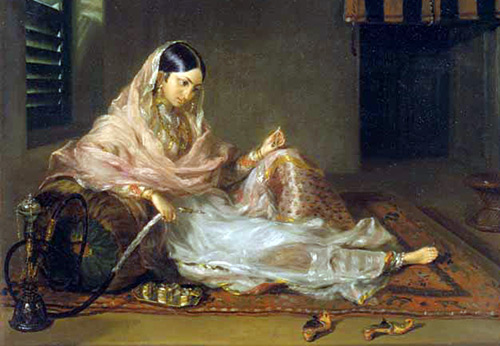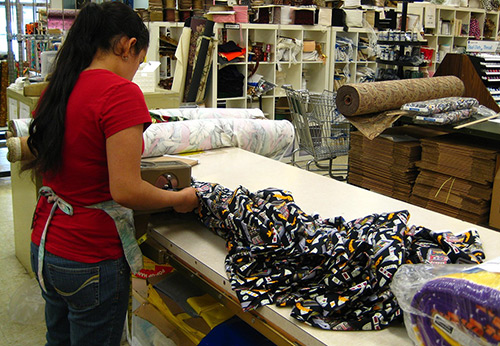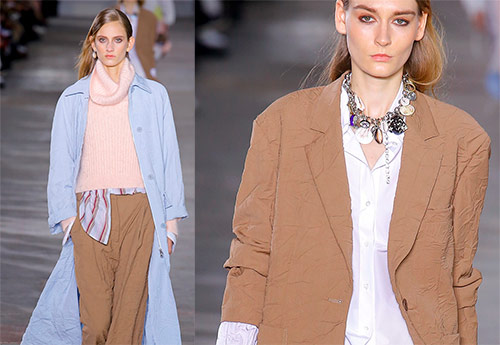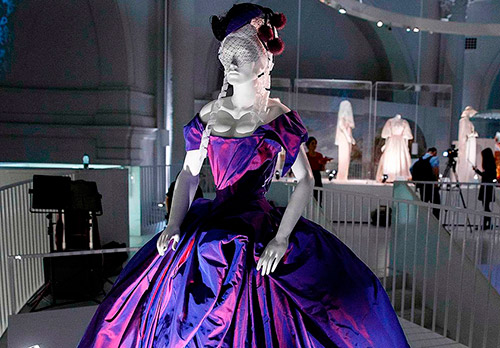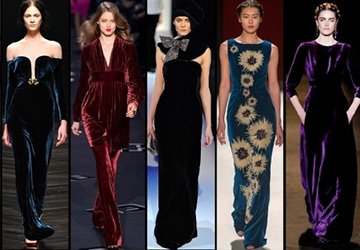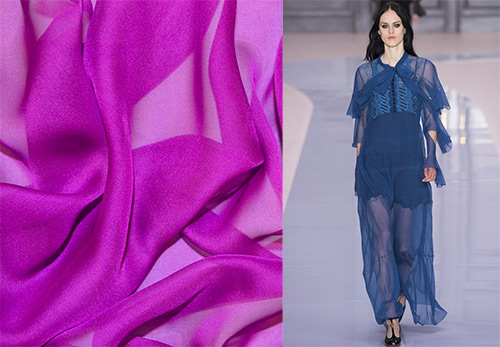Materials Science
Varieties and history of taffeta fabric
Taffeta is a thin, glossy, cotton or silk plain weave fabric. The fabric is made from tightly twisted threads, due to which rigidity appears. The name of the fabric comes from the Persian word taft?, Which means “woven”. This fabric was known in Russia, along with damask, cloth and gold-woven fabrics, for a long time, back in the XIV-XV centuries. She was brought to Russia from Byzantium, but Persia is considered her homeland.
Due to the tight twisting of the warp and weft threads, the fabric was not only stiff, but also bristled or, as they said in the old days, was “crunchy”. Curtains and "wings" of fur coats were made of taffeta. As you know, in ancient times in Russia, fur coats were worn with fur inside, and the upper part of a fur coat was decorated with a beautiful and durable fabric, for example, taffeta, brocade or velvet.
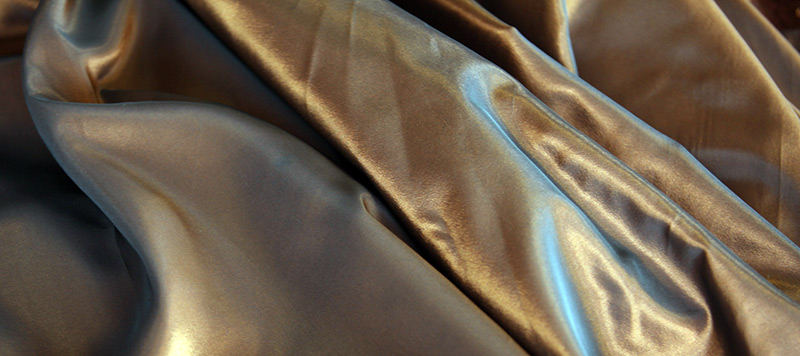
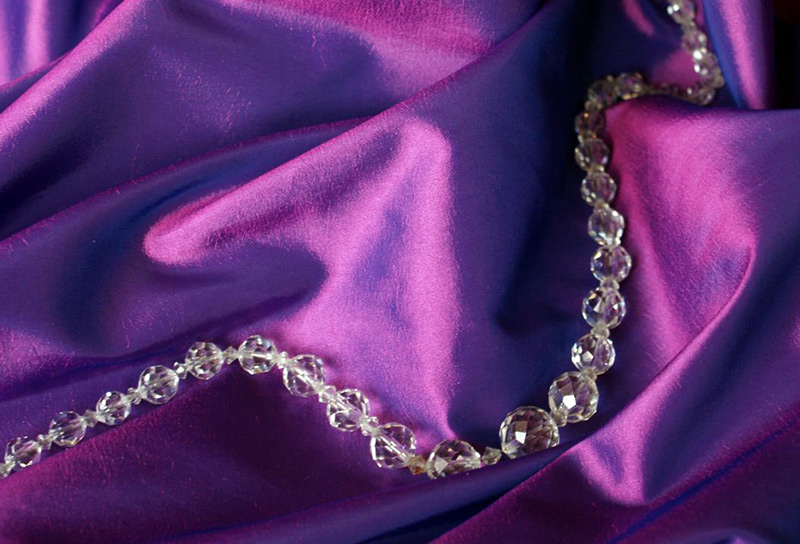
Embroidered taffeta was used for women's robes and men's caftans, for the decoration of hats and for smart shirts, they sewed females, opeshni, and soul warmers. Sundresses and scarves were sewn from bright and thin taffeta. Taffeta was also used on Russian banners.
They were especially carried away by taffeta in the 19th century during the spread of crinoline, when there were puffy petticoats. It was with taffeta that it was possible to create lush silhouettes and voluminous draperies, in which not flowing, but rigid folds are formed.
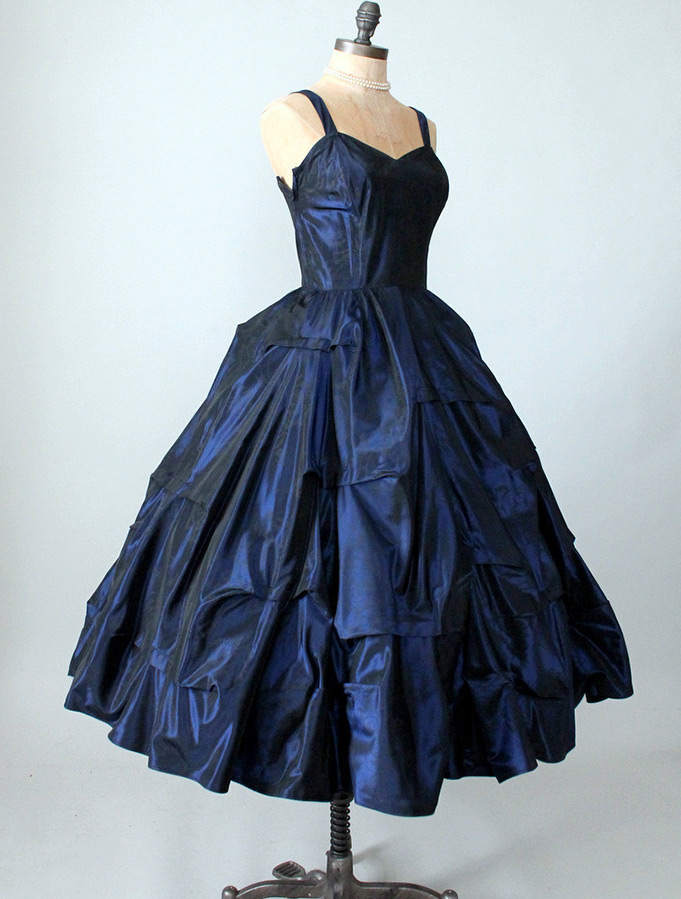
Taffeta can be made of natural silk or cotton, viscose, based on polyester and acetate.
Initially, taffeta was made from natural fibers - silk and cotton. Now taffeta is made with the addition of synthetic organic polymers and is used for sewing not only smart clothes, but also for upholstering furniture, curtains, decorative pillows, bedspreads and other decorative elements.
Taffeta is often used for sewing wedding and evening dresses. It goes well with lace and guipure. Cotton or viscose taffeta can be used for sewing everyday clothes: dresses, trousers, blouses, skirts, suits. From taffeta, chic curtains are obtained, which, due to the density of the fabric, do not allow sunlight to pass through.
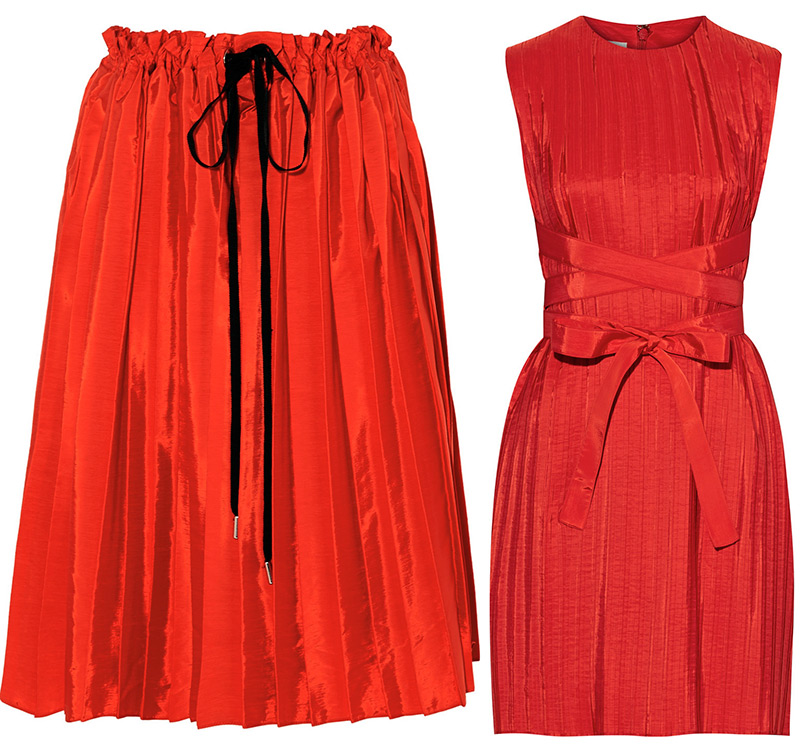
Varieties and properties
Polyester taffeta - dense and very smooth, with a noble shine, rustles when moving, you can sew a luxurious dress from this fabric.
Viscose taffeta with a shimmery sheen, less harsh, pleasant to the body and therefore good for a summer dress.
Polyester or viscose taffeta - a great option for a wedding dress.
Tapestry taffeta - luxurious fabric from which you can sew wonderful vests, skirts - bells, elegant dresses.
Among the many varieties of taffeta, there are also crumpled taffeta, which is widely used for sewing clothes and curtains. Such fabric is obtained under the influence of temperature and a special press. This fabric cannot be ironed.
There is taffeta-shangjan - luxurious fabric with a rich color palette, in which the color changes depending on the angle of view and lighting, the fabric seems to shimmer in different shades. During production, threads of different colors are used, which creates the effect of "chanzhan". The fabric itself is unusually beautiful, and therefore, even with a simple cut, elegant clothes will turn out.
In addition to elegance, taffeta has other advantages: the fabric keeps its shape remarkably, rigid folds will create the required volume; taffeta repels water well; drapes perfectly; it is strong and durable.
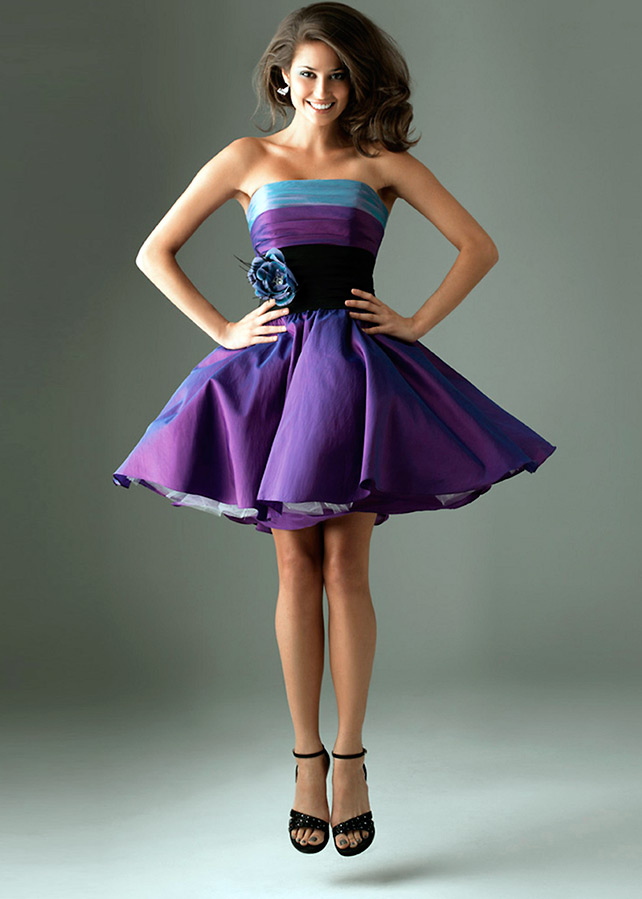
Care
Taffeta products require delicate washing, at high water temperatures the fabric shrinks, this must be taken into account when buying and cutting fabrics. It is better to wash it by hand at a temperature of 30 degrees, using detergents for delicate fabrics. If the fabric contains silk, it is impossible to squeeze, twisting it. If you decide to wash in the car, then on the most delicate mode, without squeezing. Dry on a horizontal surface, previously covered with a clean cloth.
Ironing can be done through an additional cotton cloth or from the inside, while the temperature should be kept to a minimum. (Crumpled taffeta must not be ironed.)
When cutting taffeta, the difficulty lies in the flowability of the fabric. It should also be borne in mind that with creases in the fabric, folds that are difficult to smooth can form.
And in general, taffeta requires careful care. Things should be stored on hangers, items such as curtains should be neatly rolled up, without using vacuum bags.
With proper care, a taffeta product will delight you for a long time.
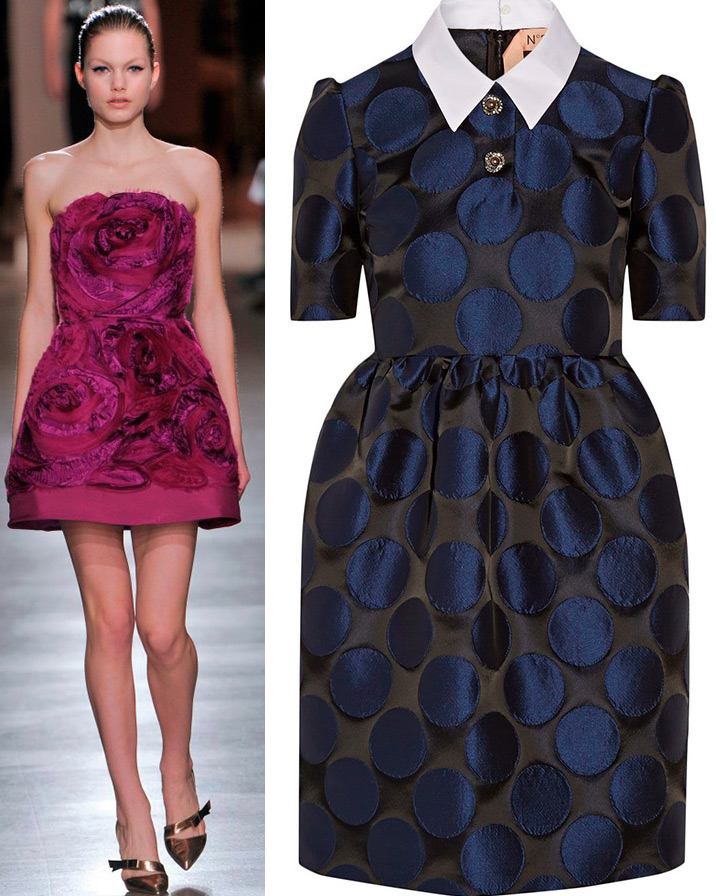
Comments and Reviews
Add a comment
Rating news
Shades of clothing that make women look younger
What shades of hair make women younger: rules and photos
Funny wedding dresses - photos and ideas
12 most expensive down jackets for the winter
How to look 25 at 40: tips from supermodels
Beautiful schoolgirls
Anti-aging haircuts and hairstyles for women
Fashionable skirts for autumn and winter
Fashionable women's trousers for the cold season
Fashionable and stylish sandals for summer 2024
Spring-summer 2024
 Fashionable dresses and tops with thin spaghetti straps
Fashionable dresses and tops with thin spaghetti straps
 Bandana tops: how to wear stylishly and beautifully
Bandana tops: how to wear stylishly and beautifully
 How to put together the perfect men's wardrobe for the summer
How to put together the perfect men's wardrobe for the summer
 Trendy shorts for spring-summer 2024
Trendy shorts for spring-summer 2024
 Fashionable skirts for spring-summer 2024: a guide to online shopping
Fashionable skirts for spring-summer 2024: a guide to online shopping
 The most fashionable dresses spring-summer 2024: styles and colors
The most fashionable dresses spring-summer 2024: styles and colors
 Fashionable total look 2024: image ideas and trends
Fashionable total look 2024: image ideas and trends
